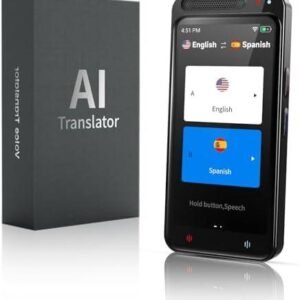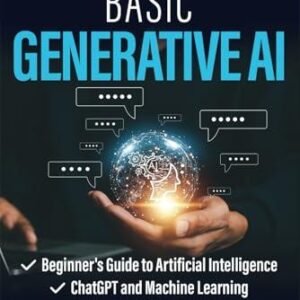In an age where technology is reshaping every facet of our lives, the landscape of education is undergoing a profound transformation. Traditional one-size-fits-all teaching methods are giving way to innovative approaches that emphasize the individual needs of each student. At the heart of this revolution is artificial intelligence (AI), a powerful tool that is revolutionizing how we teach and learn.
AI software for personalized learning is not just a trend; it represents a fundamental shift in educational philosophy—one that recognizes that each student brings unique strengths, interests, and challenges to the classroom. This dynamic technology enables educators to tailor their teaching strategies, adapt curricula, and provide support that resonates with each learner’s personal journey.
In this article, we’ll explore the various ways AI is enhancing personalized learning experiences, delve into the benefits it brings to both students and educators, and discuss the potential challenges and ethical considerations that arise in this brave new educational landscape. Join us as we navigate through the opportunities that AI presents to shape the future of education, ensuring that every learner can thrive in an increasingly complex world.
Table of Contents
- Understanding the Role of AI in Personalized Learning Environments
- Exploring Key AI Technologies Shaping the Future of Education
- Implementing AI Solutions: Best Practices for Educators and Administrators
- Measuring Success: Evaluating the Impact of AI on Student Outcomes
- Future Outlook
Understanding the Role of AI in Personalized Learning Environments
Artificial Intelligence is revolutionizing the educational landscape, particularly in the realm of personalized learning environments. By leveraging advanced algorithms and vast datasets, AI systems can identify a student’s unique learning style, strengths, and areas needing improvement. Key benefits of AI in this context include:
- Adaptive Learning Paths: AI analyzes student performance in real-time, adjusting the curriculum to keep learners engaged and challenged.
- Data-Driven Insights: Educators receive actionable insights into student progress, allowing for targeted interventions.
- Scalability: Personalized learning experiences can be scaled to accommodate large numbers of students without compromising quality.
Furthermore, AI enhances the learning experience through interactive tools and resources. These include chatbots for instant feedback, virtual tutors for additional support, and gamified learning modules that maintain student motivation. A study showcased the impact of AI-driven personalized learning on student outcomes, demonstrating significant improvements in engagement and comprehension:
| Learning Platform | Improvement in Engagement (%) | Improvement in Comprehension (%) |
|---|---|---|
| AI Tutor Pro | 75 | 60 |
| Smart Learning Hub | 80 | 65 |
| EdTech Genius | 70 | 58 |
Exploring Key AI Technologies Shaping the Future of Education
In the ever-evolving landscape of education, AI technologies are becoming pivotal in establishing personalized learning experiences tailored to individual student needs. By leveraging sophisticated algorithms and data analytics, these tools can analyse learning patterns, identify strengths, and highlight areas for improvement. Notably, they offer interactive and adaptive learning paths that cater to various learning styles, ensuring that no student is left behind. Several innovative approaches have emerged, such as:
- Intelligent Tutoring Systems (ITS): These systems provide real-time feedback and support, emulating a one-on-one tutoring experience.
- Learning Analytics: By analyzing student data, educators can track progress and customize instructional strategies accordingly.
- Natural Language Processing (NLP): This technology enables chatbots and virtual assistants to answer student queries and provide resources instantly.
The integration of these technologies into educational frameworks is setting a new standard for learner engagement and success. Schools and institutions are now exploring AI-driven platforms that not only assess student performance but also offer proactive interventions based on predictive analytics. For instance, a recent survey revealed how various educational institutions utilize AI-driven metrics:
| AI Technology | Usage Rate (%) | Impact on Learning Outcomes |
|---|---|---|
| Intelligent Tutoring Systems | 45% | Increased engagement and retention |
| Learning Analytics | 35% | Enhanced personalized feedback |
| Natural Language Processing | 20% | Improved student support |
Through effective implementation of these tools, educators can drive significant improvements in student performance, reshaping the future of education. As AI technologies continue to develop, they promise to bridge gaps in learning and create equitable opportunities for all learners, transforming traditional classrooms into dynamic learning environments.
Implementing AI Solutions: Best Practices for Educators and Administrators
To effectively integrate AI solutions in educational settings, it is essential for educators and administrators to establish a clear roadmap. Identifying specific goals for using AI can help tailor implementations to the unique needs of students and institutions. Consider the following key strategies for successful integration:
- Conduct Needs Assessments: Understand the learning gaps and opportunities that AI can address.
- Foster Collaboration: Involve teachers, students, and tech experts in the decision-making process to ensure that the tools align with educational objectives.
- Provide Professional Development: Offer ongoing training for educators to build confidence and competence in utilizing AI technologies.
Moreover, monitoring and evaluating the effectiveness of AI solutions is crucial for continuous improvement. By establishing a framework for assessment, schools can measure the impact of these technologies on student learning outcomes. Here’s a simple table that outlines potential metrics for evaluation:
| Metric | Purpose |
|---|---|
| Student Engagement Levels | Gauge interest in personalized learning experiences. |
| Academic Performance | Assess improvements in grades and test scores. |
| Feedback Surveys | Collect qualitative insights from students and teachers. |
Measuring Success: Evaluating the Impact of AI on Student Outcomes
As educational institutions increasingly integrate AI technologies into their teaching frameworks, measuring the success of these interventions becomes critical in understanding their impact on student learning outcomes. To effectively evaluate this transformation, it’s essential to focus on both qualitative and quantitative metrics. Standardized test scores, assignment submissions, and class participation rates can provide clear, numeric insights into student progress. However, surveys and feedback sessions can further illuminate the emotional and cognitive experiences students have with personalized learning through AI, capturing the essence of their engagement and motivation.
Insights derived from these evaluations can be organized into a comprehensive framework, allowing educators to pinpoint strengths and areas for improvement. Below is a sample table showcasing potential metrics for assessing AI’s impact:
| Metrics | Measurement Techniques | Expected Outcomes |
|---|---|---|
| Test Scores | Standardized Testing | Increased academic performance |
| Engagement Levels | Surveys and Observations | Higher participation and relevance |
| Learning Retention | Follow-up Testing | Improved long-term understanding |
By adopting a balanced approach that incorporates various metrics, educators can create a robust framework for understanding how AI tools are reshaping the learning landscape. The goal is not just to implement technology but to enhance educational experiences and ensure that students are truly benefiting from personalized learning journeys.
Future Outlook
As we stand at the crossroads of technology and education, the rise of AI software for personalized learning is not just a trend—it’s a revolution. By harnessing the power of artificial intelligence, we can tailor educational experiences to meet the unique needs and aspirations of every learner. This shift not only enhances engagement but also fosters a deeper understanding of core concepts, paving the way for lifelong success.
The journey towards a more personalized educational landscape is filled with exciting opportunities and challenges alike. Educators, students, and parents must work collaboratively to embrace these tools thoughtfully, ensuring that technology complements and enriches traditional learning methods. As we continue to explore the potential of AI in the classroom, let us remain vigilant in our commitment to equity and accessibility, striving to provide every learner with the resources they need to thrive.
In closing, as we look ahead, it’s clear that the future of education lies in our ability to adapt and innovate. By empowering learners through personalized experiences, we can create an educational system that not only imparts knowledge but also ignites passion and curiosity. Join us in championing this transformative movement and unlocking the full potential of every student, one personalized learning experience at a time.





